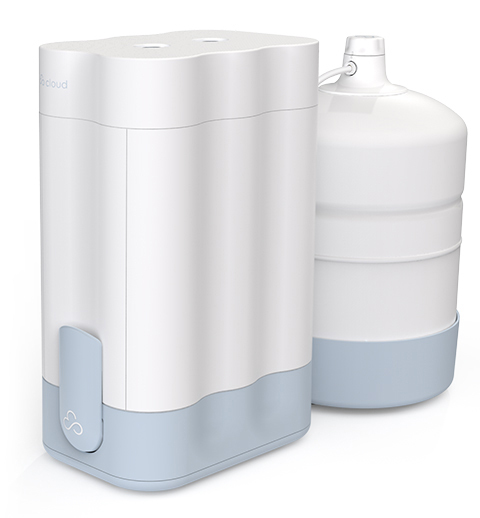Per- and polyfluorinated substances (PFAS) are a group of man-made chemicals that pollute the environment and have negative health effects.
Some scientists call PFAS “forever chemicals” because once they’re in the environment, or in your body, they’re almost impossible to remove.
PFAS have been used for decades to make non-stick Teflon, firefighting foams and other industrial products.
Unfortunately, the same traits that make PFAS so effective for non-stick pans also make them hard to remove.
Once PFAS dissolves in water, most drinking water technologies can’t remove them.
Fortunately, researchers have discovered the best way to remove PFAS, but more on that in a sec…
For now, let’s take a closer look at the dangerous health effects of PFAS.
Dangerous Health Effects of PFAS
If you were to get your blood tested right now, chances are you’d test positive for PFAS --- that’s just how common they are.
Mothers and young children are the most at risk because they have such strong effects on reproductive and developmental health.
The most common side effects of PFAS are:
- Various cancers
- Low birth weight in babies
- Decreased fertility
- Increased risk of asthma
- Thyroid disease
- Low immune function
According to Harvard University, the Center for Disease Control recommends an exposure limit for PFAS that is 10 times lower than what the EPA currently allows.
That’s why it’s up to you to take the necessary steps to protect your family.
In a Nutshell: How to Remove PFAS from Your Tap Water
Reverse osmosis (RO) is the most effective way to remove dangerous contaminants like PFAS, arsenic and lead.
Activated carbon filters are also effective, but they do not remove arsenic, lead, and most bacteria.
Another treatment option is ion exchange resins, which also remove “hard” minerals.
However, just one of these treatments alone is not enough to remove all PFAS.
That’s why you should always choose an RO system that includes all three types of filtration.
Types of Filtration that Remove PFAS
High pressure membranes, activated carbon, and ion exchange treatments are used in water treatment facilities, hospitals, commercial buildings and homes to remove up to 99% of PFAS.
Activated carbon is the most widely studied treatment for removing PFAS.
Carbon filtration is used in faucet filters, water pitcher filters, and RO systems to remove chlorine and improve the taste and smell of water.
Most are made from substances like nut shells or wood, but coconut shell carbon is the most popular because it’s a renewable resource and produces great tasting water.
Carbon fibers are very porous and have lots of tiny holes that allow PFAS to easily cling to the surface.
However, carbon filtration only works on longer chain PFAS, and shorter chain PFAS tend to sneak through.
That’s why it’s important to combine other treatment methods like ion exchange resins and reverse osmosis...
2. Ion Exchange Treatment
Ion exchange resins are positively-charged beads that act like magnets to attract negatively-charged contaminants like PFAS. .
When you’re shopping around for an in-home water filter, make sure that it is approved by the Water Quality Association and NSF International to remove PFAS.
Some water filters contain ion exchange resins that are positively-charged, which is good for removing other types of contaminants but not for PFAS.
3. High Pressure Membranes
High pressure membranes, like reverse osmosis (RO) and nanofiltration, are extremely effective at removing PFAS and other harmful contaminants.
They work by forcing pressurized water through a semipermeable membrane. The contaminants get left behind and are flushed away as wastewater, while the clean water flows through.
RO membranes are the most effective removal method for in-home use.
Research shows that RO membranes can be more than 90% effective at removing a wide range of PFAS.
A Duke University Studied Compared 89 In-Home Water Filters - Here’s What They Found:
In a recent study, researchers at Duke University recently analyzed filtered water samples from homes throughout North Carolina.
Altogether, they tested 76 point-of-use filters, including faucet-mounted styles, water pitcher filters, under-sink filters and countertop filters. They also tested 13 different whole-house filters.
“The under-sink reverse osmosis filter is the most efficient system for removing both the PFAS contaminants prevalent in central N.C. and the PFEAs, including GenX, found in Wilmington.”
Researchers concluded that:
“All of the under-sink reverse osmosis and two-stage filters achieved near-complete removal of the PFAS chemicals we were testing for. In contrast, the effectiveness of activated-carbon filters used in many pitcher, countertop, refrigerator and faucet-mounted styles was inconsistent and unpredictable.”
As you can see, not all water filters are created equal.
Researchers also found that when membranes are not properly maintained they can actually do more harm than good.
Fortunately, high-end RO systems like Cloud Water Filters use built-in software to track water usage and automatically ship replacement membranes right to your door.
How to Test Your Water for PFAS
Before you go out shopping for water filters, it’s important to know what’s in your water.
If you’re on a community water system, chances are your water is contaminated with some level of uranium, arsenic, lead, nitrate, bacteria or other pollutants.
Private wells, on the other hand, tend to have higher rates of disease-causing pathogens and bacteria.
Testing your water has two benefits:
- It makes it easier to shop for the right filter
- You can test your water again after the filter is installed to make sure it’s working
But remember, filters only work if they are properly installed so it’s best to let a professional handle it.
All Cloud Water Filters come with white-glove installation and are proven to remove up to 99% of PFAS and other dangerous contaminants.
Plus, their built-in software syncs to an app on your phone so you can monitor your water quality 24/7.

